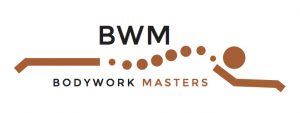What is Sever’s Disease?
If you are a parent of a sporty child you may be familiar with Sever’s Disease. Sever’s Disease is one of the most common causes of heel pain in growing children. Ten percent of adolescents between 8-15 years old will experience this painful condition. It is more common in boys than girls and there is a 60% chance of Sever’s affecting both heels. Often times Sever’s is not found until the symptoms are acute since it relies on reporting of symptoms from the child who may wait until the pain is excruciating to alert a parent.
The American College of Foot and Ankle Surgeons refer to Sever’s Disease as “calcaneal apophysitis.” The calcaneous, more commonly referred to as the heel of the foot, is not fully developed until around the age of 15. From 8 to 15 years old, the new bone forms at the growth plate leaving an area of weakness at the back of the heel, and with too much repetition inflammation can develop.
Symptoms of Sever’s Disease
Some common symptoms are:
- Pain or tenderness in the back of the heel
- Pain made worse by physical activity
- Limping
- Tight calf muscles
- Swelling of the heel(s)
Causes of Sever’s Disease
Sever’s is caused from rapid growth of the bones during adolescence. The bones get longer and the muscles and tendons get tighter as they adjust to the increased length of the bone. The tight muscles and tendons cause pulling on the back of the heel. This tightness decreases the range of motion of the heel. Other factors may be that the child’s feet roll in or are flat which cause the Achilles tendon to twist.
Sever’s can also be caused by poor footwear that restricts the range of motion of the ankle or by poor foot mechanics which can be caused by structural imbalances in the hip region.
Other factors include height and weight, how much physical activity one is doing, frequency of activity, type of activity, increased body weight, and high BMI.
Diagnosing Sever’s
Doctors generally diagnose Sever’s with a physical exam and assessment of symptoms reported by the child. In some instances X-rays may help to confirm a diagnosis and rule out a fracture, bony growth or chronic infection. If it is Sever’s, there is often a painful lump as the back of the heel and extremely tight calf muscles. The child may feel fine at the beginning of an activity but in excessive pain at the end. Sever’s is made worse by the heel striking a hard surface repetitively leading to inflammation of the tissue surrounding the heel.
How Can Bodywork Help Relieve Sever’s Pain?
At Bodywork Masters we see many athletic adolescents with Sever’s Disease. Often the athlete will report extreme pain at the end of an activity. The symptoms may become increasingly worse as the season of the sport lengthens.
Some bodywork treatments that are helpful to treat Sever’s are:
- Cupping to increase blood flow to the region of the body
- Applying heat to the area
- Slow, deep tissue massage to the calf, hamstring and lower back
- Electric stimulation with a TENS machine
- Assisted stretching
It is recommended that the athlete comes for 60 minute sessions at least once a week to continue to lengthen the muscles and tendons of the calf. If an athlete is prone to Sever’s, it is best to start weekly sessions before a sports season begins and continue throughout to keep pain and inflammation under control.
Other Helpful Treatments
Bob Tricomi, LMT, owner of BodyWork Masters recommends that those suffering with Sever’s use a foam roller on the calf, hamstring and back to keep muscles flexible. He also recommends only using ice after an acute flare up and for no more than 10 minutes. A better option is using a heating pad after rolling it out with a foam roller. This should be done at least 3 times a week, and after participating in any movement that impacts the heel.
What If You Are An Adult with Foot Pain?
When at home try walking around with bare feet and use heel lifts inside sneakers to decrease the length of the calf muscle.
Although Sever’s is a disease that occurs during adolescence, adults can experience pain in the foot and calf also. To learn more, please refer to our blog post about Plantar Fasciitis.
